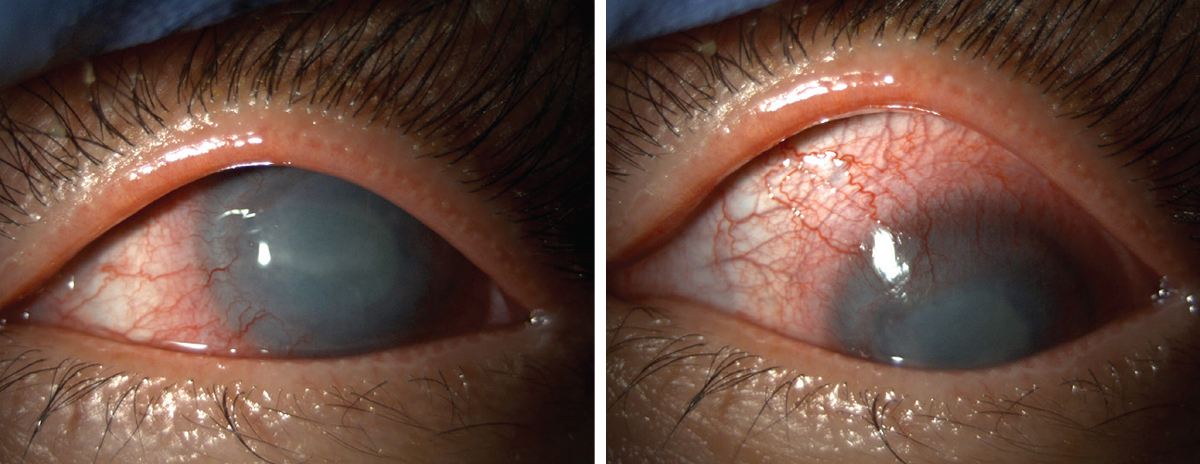 |
|
Patients who wore daily disposable contact lenses were three times less likely to develop AK than those who wore reusable lenses in this study. Photo: Suzanne Sherman, OD. Click image to enlarge. |
Nearly half of patients who develop Acanthamoeba keratitis—typically caused by poor lens handling—will end up losing their vision. In fact, a new study published in Ophthalmology on risk factors for this type of microbial keratitis noted that for “Acanthamoeba keratitis, unlike bacterial keratitis in contact lens users, 90% of cases are associated with avoidable risks.”
Though the condition is rare (0.31 to 0.48 cases per 10,000 people based on data from the United Kingdom and the Netherlands), its visual impact is often devastating, so researchers set out to identify modifiable risk factors that may help reduce its incidence.
The study observed a total of 83 contact lens wearers who developed Acanthamoeba keratitis. They compared the clinical data and self-administered questionnaires of patients who used daily disposable contact lenses with those who wore reusable lenses. They found that the latter increased the risk of infection threefold.
Several modifiable risk factors were identified in both types of lens users. For those who wore daily disposable lenses, Acanthamoeba keratitis was associated with the following: less frequent professional follow-up (odds ratio (OR): 10.12), showering in lenses (OR: 3.29), lens reuse (OR: 5.41) and overnight wear (OR: 3.93).
“This study is the first to show a substantial three-times lower risk of severe corneal infections in daily disposable lenses compared with reusables,” says Nicole Carnt, PhD, of the University of New South Wales, lead author of the study. The analysis estimated that 30% to 62% of cases could have been prevented if patients were using daily disposable instead of reusable soft lenses. “However, daily disposables are not without risk, which we demonstrate can be minimized by more frequent optometry consultations and eliminating daily disposable reuse,” she points out.
Showering in lenses and leaving lenses on during sleep were also two significant risk factors observed among both daily disposable and reusable contact lens users, the former resulting in a 3.3-fold increased risk of infection. Dr. Carnt adds, “This is the first time that overnight wear, a major risk factor for bacterial corneal infection, has been significantly associated with Acanthamoeba keratitis.” Reuse of lenses and less frequent follow-up visits still topped the list as the most influential risk factors.
“Optometrists are in a powerful position to mitigate the risk of Acanthamoeba keratitis and ensure healthier contact lens wear,” concludes Dr. Carnt. Advising patients to remove lenses while showering and at night and avoid reusing them may help prevent more cases of this vision-threatening infection, she suggests.
Carnt N, Minassian DC, Dart JKG. Acanthamoeba keratitis risk factors for daily wear contact lens users: a case control study. Ophthalmology. August 9, 2022. [Epub ahead of print]. |


